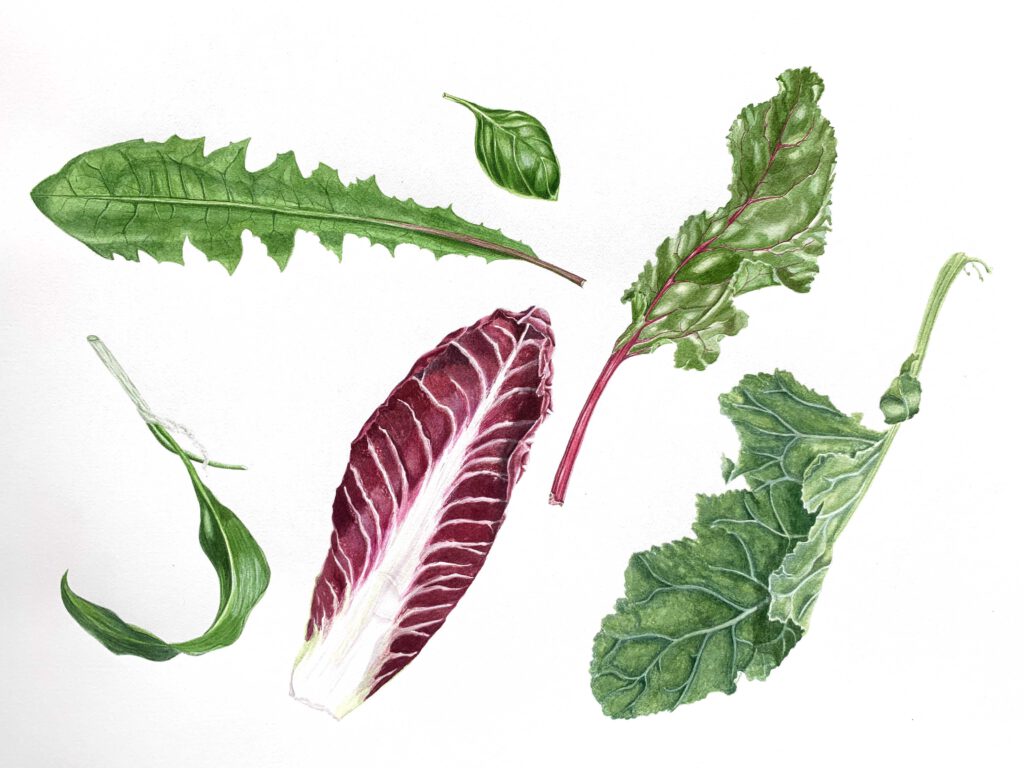As an artist, there’s a constant balancing act between creativity and structure. When it comes to botanical art, that balance becomes even more fascinating, blending the precision of science with the flow of artistic expression. Whether you’re just starting out or you’ve been drawing plants for years, there’s always something new to explore in the world of botanical illustration.
Why Botanical Art?
I’ve always been drawn to nature’s beauty—every petal, stem, and seed tells a story. Botanical art allows me to take a deeper look at these natural wonders, translating them into watercolor illustrations that serve both aesthetic and scientific purposes. For me, it’s not just about creating pretty pictures (although I’ll admit, I love that part too), but also about communicating nature’s delicate complexity.
The Science Behind the Art
While botanical art often gets categorized as decorative, it has a rich history tied to scientific research. Some of my own work, especially when illustrating for scientific communication, requires the utmost precision. Every leaf’s vein, every subtle color change, and every stage of growth matters. As I paint, I find myself in a conversation with nature—what can I observe? What does this plant teach me about its ecosystem?
When I dive into more detailed work, like illustrating different growth stages or ecosystems, it’s like piecing together a natural puzzle. It keeps me connected to the scientific world, something I explore further in my current studies with Illustraciencia. In a way, botanical art helps us preserve and communicate nature’s fragile beauty in a world that’s constantly changing.
Tips for Getting Started
I know starting botanical illustration can seem daunting—believe me, I was there in 2017! But here are a few tips to help you begin your journey:
1. Start Simple: Focus on one plant at a time, maybe not even a plant, more like a tiny structure of a plant, like a petal, a leaf or a fruit. Choose something you’re drawn to, whether it’s a flower from your garden, a plant from a botanical garden, or even a plant from your supermarket!

2. Observe First, Draw Later: Take time to look closely at your subject. I like to sketch quickly in my notebook before committing to a full watercolor piece, this helps me capture those fleeting details. I ask myself questions: “What’s that thing coming out between the stem and a leaf? should I add it? is that a petal, what on earth is a tepal!!! Do your research. You can download an App to help you identify your plant and read more about it. This is how you’ll slowly learn a bit of plant anatomy. Until one day you find yourself saying: “The leaves are pinate, with short petiole and slightly revolute.” haha.
3. Find Your Own Process: Every artist has their way of working. Some days, I focus more on the art; other days, I’m in “scientific mode,” measuring, labelling, and cross-referencing plant details, and using my new digital microscope. But what I always do is, observe, take notes about the plant, take pictures, do a color chart or color study for that plant, sketch, compose and finally paint. That’s almost always the order. Your work of art is not your process, your process will be messy, will have mistakes, it’s a practice before the big painting occurs. Don’t let yourself be fooled by those super perfect “studies” you see on social media, those are perfect and already works of art because they’re meant to be shown as such. My process is messy and dirty like the one you see below.

4. Experiment: Whether you use traditional watercolors or digital tools like Procreate, let yourself explore different techniques. You might be surprised by how much your style evolves!
What’s Next for Me?
If you’ve been following my work, you know I’m currently in a bit of a creative transition. I’m focusing on creating more complex compositions, often showing plants in their natural habitat. It’s exciting, and challenging, and makes me look at my art with fresh eyes.
I’ll be sharing more of these works in upcoming newsletters, along with tutorials and free downloadable PDFs for those who want to dive into botanical illustration themselves. Whether you’re looking to improve your watercolor techniques or just enjoy the process of observing plants, there’ll be something for you.
If you haven’t already, make sure to subscribe to my newsletter here and stay tuned for more tips, tutorials, and behind-the-scenes looks into my creative process!